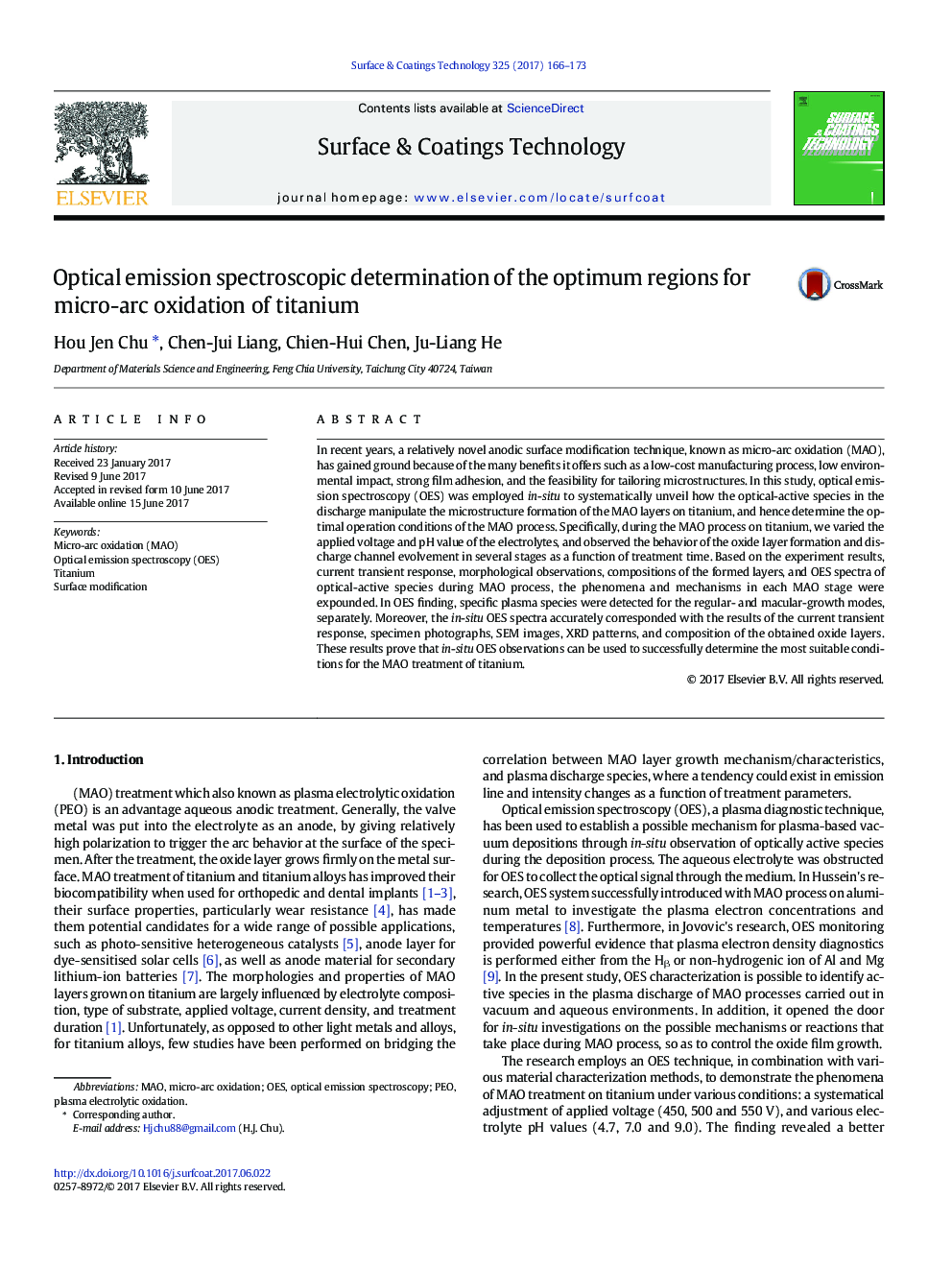| Article ID | Journal | Published Year | Pages | File Type |
|---|---|---|---|---|
| 5464804 | Surface and Coatings Technology | 2017 | 8 Pages |
Abstract
In recent years, a relatively novel anodic surface modification technique, known as micro-arc oxidation (MAO), has gained ground because of the many benefits it offers such as a low-cost manufacturing process, low environmental impact, strong film adhesion, and the feasibility for tailoring microstructures. In this study, optical emission spectroscopy (OES) was employed in-situ to systematically unveil how the optical-active species in the discharge manipulate the microstructure formation of the MAO layers on titanium, and hence determine the optimal operation conditions of the MAO process. Specifically, during the MAO process on titanium, we varied the applied voltage and pH value of the electrolytes, and observed the behavior of the oxide layer formation and discharge channel evolvement in several stages as a function of treatment time. Based on the experiment results, current transient response, morphological observations, compositions of the formed layers, and OES spectra of optical-active species during MAO process, the phenomena and mechanisms in each MAO stage were expounded. In OES finding, specific plasma species were detected for the regular- and macular-growth modes, separately. Moreover, the in-situ OES spectra accurately corresponded with the results of the current transient response, specimen photographs, SEM images, XRD patterns, and composition of the obtained oxide layers. These results prove that in-situ OES observations can be used to successfully determine the most suitable conditions for the MAO treatment of titanium.
Keywords
Related Topics
Physical Sciences and Engineering
Materials Science
Nanotechnology
Authors
Hou Jen Chu, Chen-Jui Liang, Chien-Hui Chen, Ju-Liang He,
